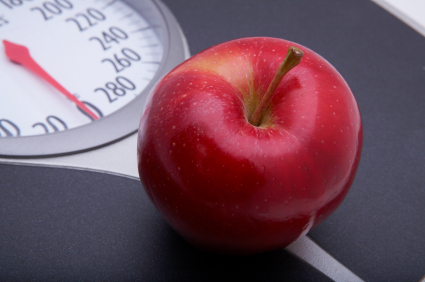Blueberries, spinach, Brussels sprouts, broccoli. These superfoods grab the headlines. Study after study raves about the antioxidants in them that will keep you young.
And yet, many more fruits and vegetables harbor vital nutrition, too. They just don’t get the press.
But now a study from the Netherlands sheds light on an interesting pattern in this color palate. The study was the “gold-standard” type that scientists take seriously. It appears in the journal Stroke.1
The researchers, all nutritionists with the university, conducted a study of a large group – 20,069 men and women. They ranged in age from 20 to 65 years old.
Researchers kept in touch with them over a 10-year period.
At the end of that decade, each person was given a food list with 178 items on it. They were asked, “How often did you eat these foods?”
Researchers then assessed the number of strokes in the group during that time. During the study decade, 233 incidents of stroke had occurred.
Researchers looked at the fruit and vegetable consumption among all the study participants. They attempted to find a common link.
Which foods helped prevent stroke? Well that was the most interesting part…
It wasn’t the powerhouse superfoods you hear so much about.
Spinach didn’t cut stroke risk. Brussels sprouts and broccoli didn’t either.
Instead, the “white fruits” – the apples and pears – took first place in cutting strokes.
The people who ate more white fruits (and white vegetables) had 52% lower incidence of stroke, researchers wrote. The risk decreased by 9% with each daily serving.
Apples and pears were the most commonly eaten white fruits and vegetables.
Of course, surveys aren’t the most reliable type of study. But more and more research is popping up surrounding these overlooked superfoods. And they are finally getting the respect they deserve.
Think about it… We hear so much about the green, dark leafy vegetables. And the orange/yellow citrus fruits. Plus the red/purple berries.
But we rarely hear about the whites, like apples and pears.
The color of the edible portion of a fruit or vegetable often reflects the beneficial nutrients. They often contain antioxidants that combat damaging “free radicals” caused by pollution and chemicals. And they help offset the ravages of chronic disease and aging.
The Power of Apples and Pears
The famous Nurses’ Health Study also found that pears and apples are superstars. One data analysis linked pears and apples with lower risk of type 2 diabetes.2
In another study from the Netherlands, eating apples and pears reduced bladder cancer risk.3
Apples, of course, have that nice red skin. Studies have shown that polyphenols (the most abundant type of antioxidant) in apples have multiple benefits. People who eat apples have reduced risk of:
- some cancers
- cardiovascular disease
- asthma
- diabetes.
They also have very high levels of antioxidants, which helps stop cancer cell growth and lowers cholesterol.4
One research group analyzed 10 different types of freshly harvested apples. Honeycrisp and Red Delicious apples had the highest total phenolic content and the highest antioxidant levels. And, the phenols in all the apples – both the peel and the pulp – contained enzymes that control blood sugar.5
Apples were a clear winner in a large 20-year study of nearly 10,000 adults. Those who ate the most apples had lower heart disease risk. The high water-soluble fiber in apples is key, researchers note.6
Pears are also an excellent source of dietary fiber. That’s why pears help prevent heart disease and type 2 diabetes. And, in the Baltimore Longitudinal Study of Aging, apples and pears had the second highest source of flavonols among all fruits and vegetables. This type of antioxidant is linked to reduced risk of vascular diseases.7 The flavonol epicatechin, found in pears, is also a particularly powerful antioxidant.8
Further, a large NIH study involving 490,802 adults found that apples and pears helped protect against esophageal cancer.9
Of course, you get the full nutrient value from raw apples and pears. As always, choose organic.
And right now is the perfect time of year to enjoy these delicious fruits. It’s the season to find fresh-picked apples. Why not take a trip to your local farmers market this weekend? Perhaps you’ll get lucky and find pears, too.
References:
1http://stroke.ahajournals.org/content/42/11/3190
2http://www.ncbi.nlm.nih.gov/m/pubmed/22357723/>
3http://www.unboundmedicine.com/anesthesia/ub/citation/19618458/Consumption_of_vegetables_and_fruit_and_the_risk_of_bladder_cancer_in_the_European_Prospective_Investigation_into_Cancer_and_Nutrition_
4http://www.ncbi.nlm.nih.gov/pubmed/15140261
5http://online.liebertpub.com/doi/abs/10.1089/jmf.2009.0273?prevSearch=allfield%253A%2528Barbosa%2529&searchHistoryKey
6http://www.ncbi.nlm.nih.gov/pubmed/12963562
7http://www.raysahelian.com/flavonols.html
8http://www.sciencedirect.com/science/article/pii/S088915751100113X”>http://www.sciencedirect.com/science/article/pii/S088915751100113X
9http://www.ncbi.nlm.nih.gov/pubmed/17691111″>http://www.ncbi.nlm.nih.gov/pubmed/17691111

